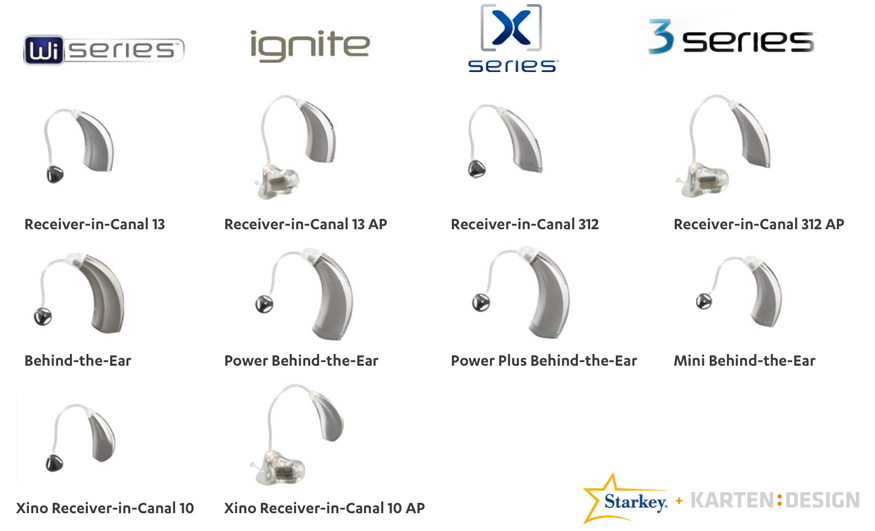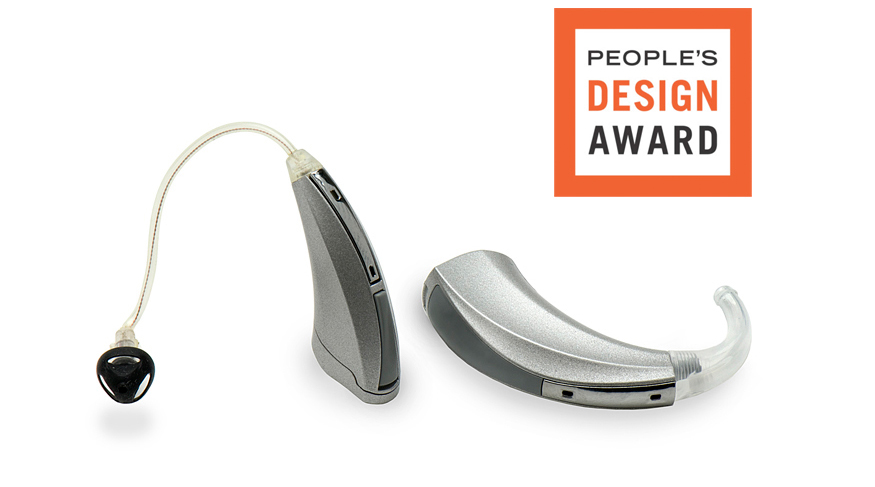
Improving the Hearing Aid User Experience Through Design
Starkey, a hearing aid manufacturer, approached Karten Design to develop a design language for its hearing aids. Technologically, Starkey’s digital signal processing led the market. But the design of its bulky, beige devices did nothing to communicate the advanced technology inside. Though creating a “design DNA” that visually represented Starkey’s technology was our initial objective, we quickly realized an opportunity for design to create a better experience around Starkey’s products, improving the quality of life for millions of hearing impaired people.
Starkey, a hearing aid manufacturer, approached Karten Design to develop a design language for its hearing aids. Technologically, Starkey’s digital signal processing led the market. But the design of its bulky, beige devices did nothing to communicate the advanced technology inside. Though creating a “design DNA” that visually represented Starkey’s technology was our initial objective, we quickly realized an opportunity for design to create a better experience around Starkey’s products, improving the quality of life for millions of hearing impaired people.
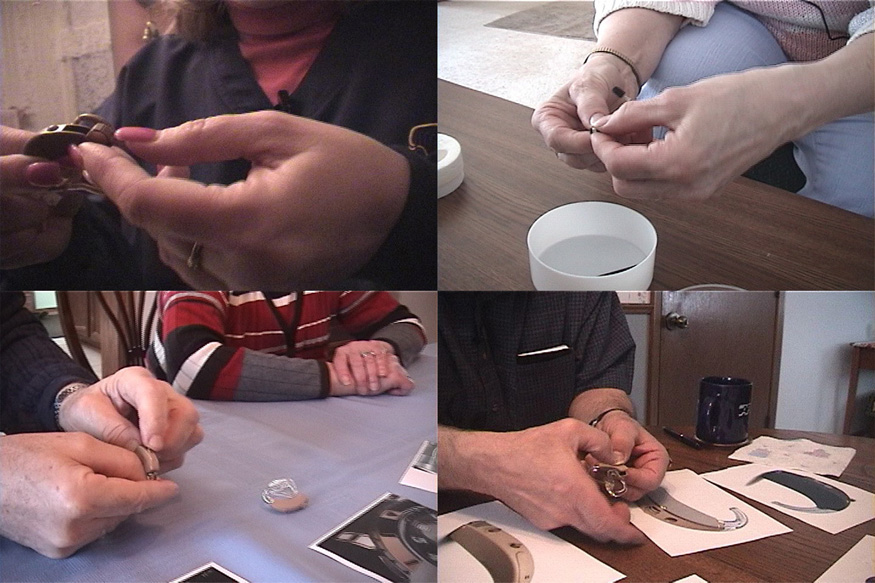
Karten Design spent time with hearing aid users, learning about their daily experiences.
Understanding User Needs
Before putting pencil to paper, we spent time with end users to learn about the physical and emotional challenges that people with hearing impairment face. During in-depth interviews in hearing aid users’ homes, researchers experienced the frustrations that 60- to 80-year-old users face with small buttons, battery doors and controls not created with their needs in mind. This research laid the foundation for our six-year partnership with Starkey, during which our designers, researchers and engineers worked with Starkey to developed a whole family of award-winning hearing aids.
Beautiful in the Hand; Invisible Behind the Ear
One of the first things we learned was that no one wants a hearing aid. Users associate traditional hearing aids with age, disability and weakness. The average person with hearing loss lives in denial for 5-9 years before being fit with a hearing aid, tolerating social isolation rather than admitting to a weakness.
Our first goal was to change the image of hearing aids. We set out to design hearing aids that empower their users rather than making them feel weak. The design needed to be "beautiful in the hand and invisible behind the ear." It needed to make people feel good when they looked at their hearing aid in the audiologists' office, but disappear during daily use without calling attention to the user's disability. We developed a design language that borrows visual cues from modern architecture, jewelry and automotive design. With a palette of six understated colors that blend with hair and skin tones, they become virtually invisible behind the ear.
Zōn quickly became Starkey’s most successful product launch in the company’s 40-year history and the fastest-selling hearing aid in the United States. It has solidified Starkey’s standing in the group of elite global hearing aid providers.
Before putting pencil to paper, we spent time with end users to learn about the physical and emotional challenges that people with hearing impairment face. During in-depth interviews in hearing aid users’ homes, researchers experienced the frustrations that 60- to 80-year-old users face with small buttons, battery doors and controls not created with their needs in mind. This research laid the foundation for our six-year partnership with Starkey, during which our designers, researchers and engineers worked with Starkey to developed a whole family of award-winning hearing aids.
Beautiful in the Hand; Invisible Behind the Ear
One of the first things we learned was that no one wants a hearing aid. Users associate traditional hearing aids with age, disability and weakness. The average person with hearing loss lives in denial for 5-9 years before being fit with a hearing aid, tolerating social isolation rather than admitting to a weakness.
Our first goal was to change the image of hearing aids. We set out to design hearing aids that empower their users rather than making them feel weak. The design needed to be "beautiful in the hand and invisible behind the ear." It needed to make people feel good when they looked at their hearing aid in the audiologists' office, but disappear during daily use without calling attention to the user's disability. We developed a design language that borrows visual cues from modern architecture, jewelry and automotive design. With a palette of six understated colors that blend with hair and skin tones, they become virtually invisible behind the ear.
Zōn quickly became Starkey’s most successful product launch in the company’s 40-year history and the fastest-selling hearing aid in the United States. It has solidified Starkey’s standing in the group of elite global hearing aid providers.
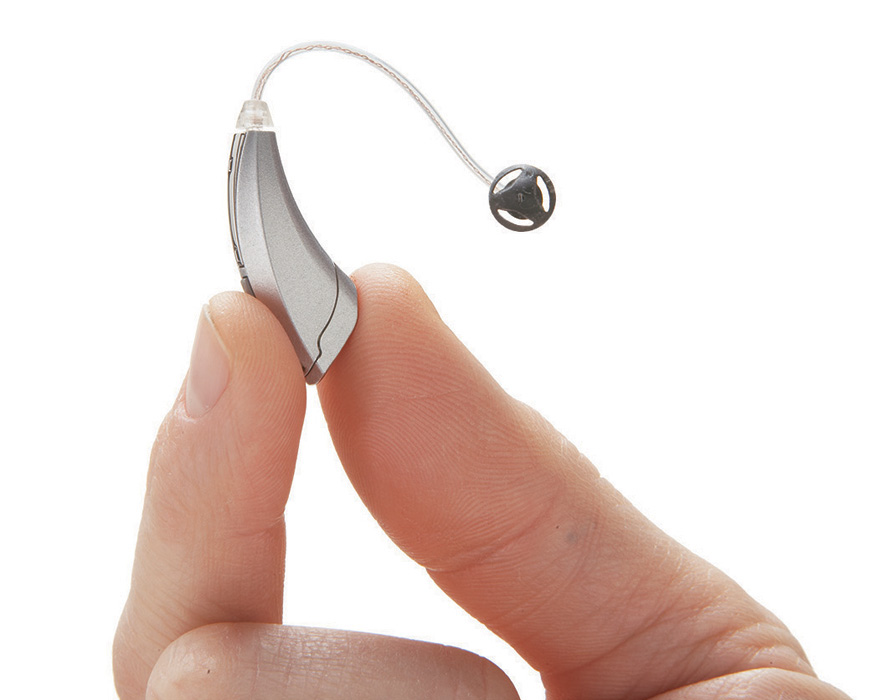
The Zon Hearing Aid, released in 2008.
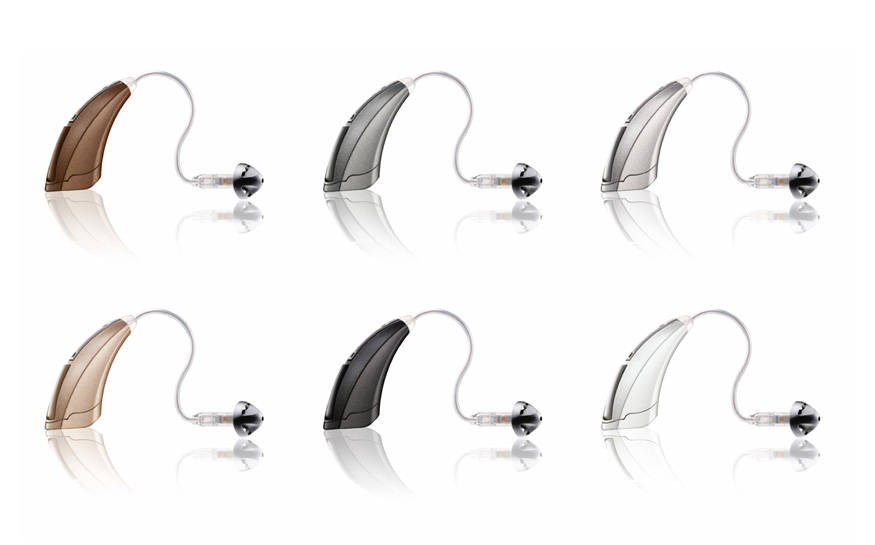
Karten Design developed a palette of sophisticated colors that blend with hair and skin tones to disappear behind the ear. Inspired by the natural translucency of hair and skin, we specified high-gloss metallic paint that adds depth and dimension.

The Starkey Zon Hearing aid was awarded the Cooper Hewitt National Design Awards' People's Design Award in 2008.
Improving Usability
Following the success of Zon, Karten Design took a closer look at usability when developing Starkey's next-generation hearing aid. In spending time with hearing aid users, we learned that, because of conditions like arthritis and diminished dexterity, adjusting volume and digital listening modes was a daily frustration. We experienced the huge emotional toll that this problem takes on users who feel disabled by their inability to operate controls that were not created with their needs in mind.Fueled by this discovery, Karten Design developed solutions for Starkey’s next-generation hearing aids that would make user interaction more comfortable and intuitive.
The S Series™ behind-the-ear (BTE) with Sweep™ Technology allows users to adjust settings with the subtle sweep of a finger. An upward sweep of the finger turns the volume up; a downward sweep turns volume down and a quick touch switches between digital listening modes.
We tested the gestural interface extensively with potential users to ensure that it was a valuable, intuitive addition to Starkey’s product line. The research team relied on interviews, surveys, observations and video documentation of users interactions with a prototype device to refine the interface until it was universally easy to understand and use.
When the S Series was released, it enjoyed the highestinitial sales for any Behind-the-Ear device in Starkey’s history.
Following the success of Zon, Karten Design took a closer look at usability when developing Starkey's next-generation hearing aid. In spending time with hearing aid users, we learned that, because of conditions like arthritis and diminished dexterity, adjusting volume and digital listening modes was a daily frustration. We experienced the huge emotional toll that this problem takes on users who feel disabled by their inability to operate controls that were not created with their needs in mind.Fueled by this discovery, Karten Design developed solutions for Starkey’s next-generation hearing aids that would make user interaction more comfortable and intuitive.
The S Series™ behind-the-ear (BTE) with Sweep™ Technology allows users to adjust settings with the subtle sweep of a finger. An upward sweep of the finger turns the volume up; a downward sweep turns volume down and a quick touch switches between digital listening modes.
We tested the gestural interface extensively with potential users to ensure that it was a valuable, intuitive addition to Starkey’s product line. The research team relied on interviews, surveys, observations and video documentation of users interactions with a prototype device to refine the interface until it was universally easy to understand and use.
When the S Series was released, it enjoyed the highestinitial sales for any Behind-the-Ear device in Starkey’s history.
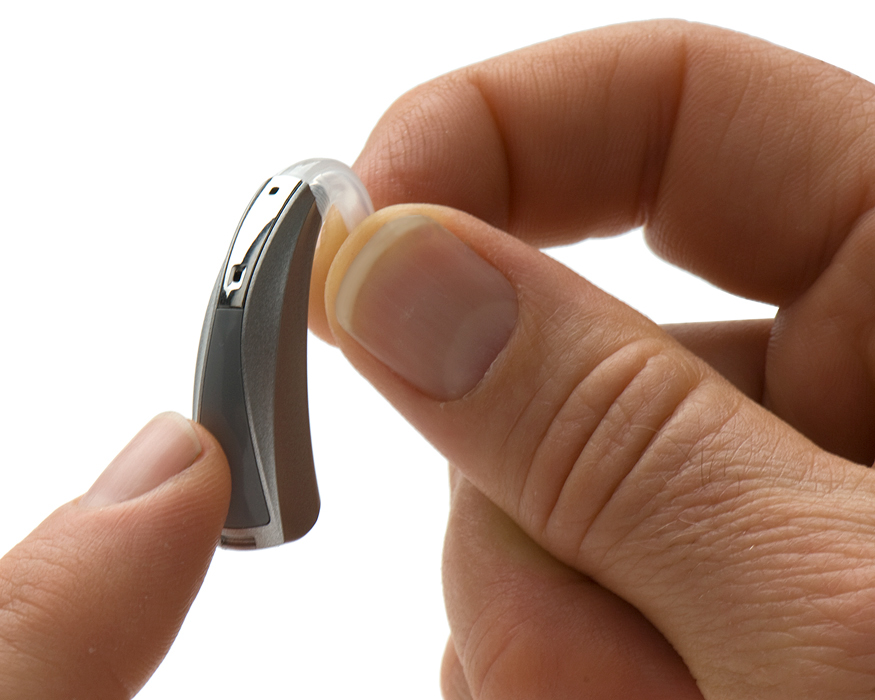
The hearing industry’s first touch control makes it easy for users to control their hearing aids with discrete natural gestures.
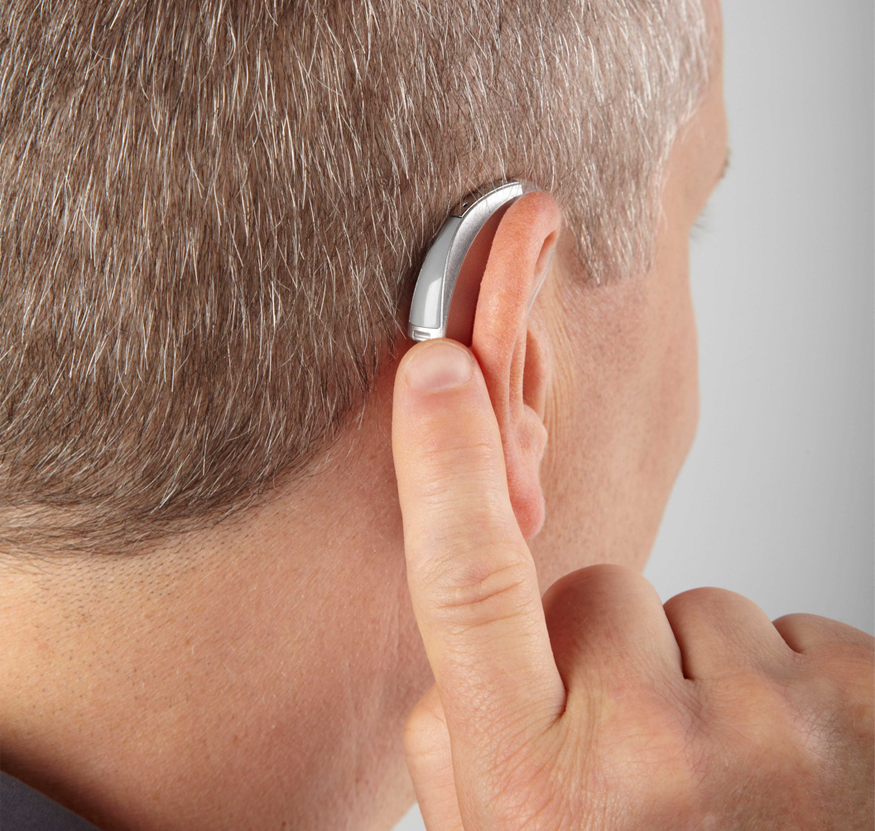
Today, Karten Design's design language has formed the basis for Starkey's entire behind-the-ear hearing aid product line.
